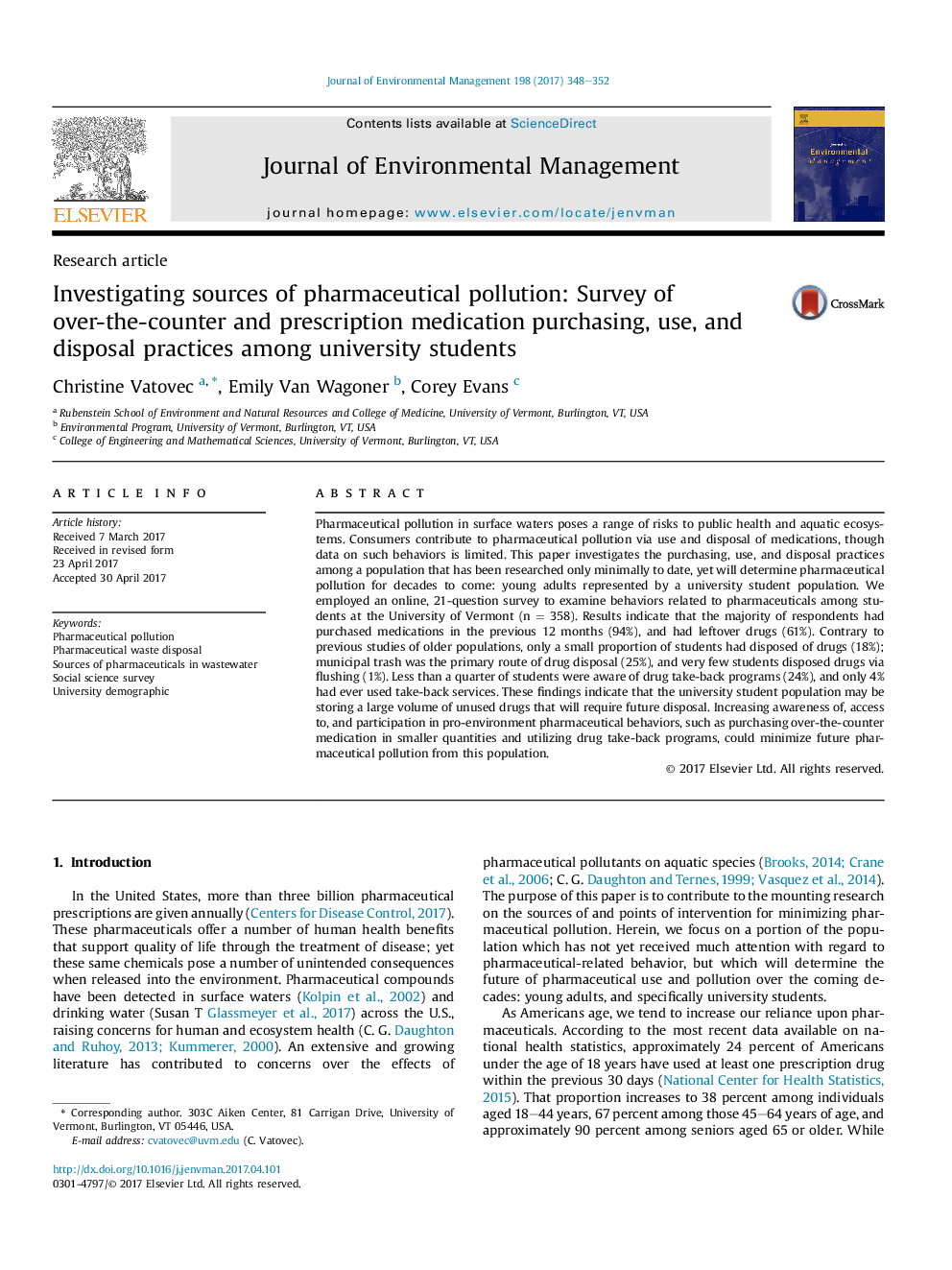| Article ID | Journal | Published Year | Pages | File Type |
|---|---|---|---|---|
| 5116759 | Journal of Environmental Management | 2017 | 5 Pages |
Abstract
Pharmaceutical pollution in surface waters poses a range of risks to public health and aquatic ecosystems. Consumers contribute to pharmaceutical pollution via use and disposal of medications, though data on such behaviors is limited. This paper investigates the purchasing, use, and disposal practices among a population that has been researched only minimally to date, yet will determine pharmaceutical pollution for decades to come: young adults represented by a university student population. We employed an online, 21-question survey to examine behaviors related to pharmaceuticals among students at the University of Vermont (n = 358). Results indicate that the majority of respondents had purchased medications in the previous 12 months (94%), and had leftover drugs (61%). Contrary to previous studies of older populations, only a small proportion of students had disposed of drugs (18%); municipal trash was the primary route of drug disposal (25%), and very few students disposed drugs via flushing (1%). Less than a quarter of students were aware of drug take-back programs (24%), and only 4% had ever used take-back services. These findings indicate that the university student population may be storing a large volume of unused drugs that will require future disposal. Increasing awareness of, access to, and participation in pro-environment pharmaceutical behaviors, such as purchasing over-the-counter medication in smaller quantities and utilizing drug take-back programs, could minimize future pharmaceutical pollution from this population.
Keywords
Related Topics
Physical Sciences and Engineering
Energy
Renewable Energy, Sustainability and the Environment
Authors
Christine Vatovec, Emily Van Wagoner, Corey Evans,
